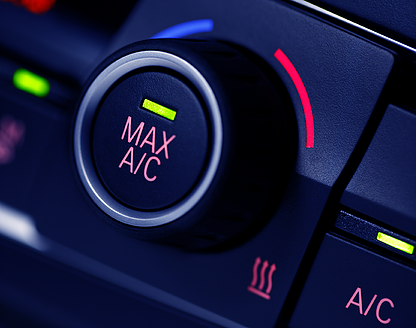With the arrival of summer and the mercury rising, this week’s “Getting to Know” guide takes a look at the job of air conditioning and how it works.
What is the role of air conditioning?
As well as doing the job of cooling down the inside of the car, air conditioning can also help to filter out pollen, pollutants and any airborne bacteria, thereby improving the quality of air in the cabin. It is also a very useful system to demist the windscreen during periods of cold weather as it creates dry air, thereby removing the humidity that causes windows to steam up.
When did air conditioning first come about?
Packard, the American car manufacturer, invented the cooling system for cars back in 1939, and was the first to offer factory-installed air conditioning.
What are the key components of the air conditioning system?
The core parts of the air conditioning system are as follows:
The compressor: Driven by an engine belt, it takes the gas or refrigerant (also known as Freon) and pressurises it so it absorbs heat and cools the air.
The condenser: Hot, compressed air passes through the condenser and gets much cooler as it dissipates the heat it’s carrying. As it cools, the gas condenses back into a liquid.
The evaporator: Does the opposite of the condenser. As the very cool liquid is passed through the evaporator’s tubes, air is forced through and gets cold before it blows into the cabin. As the liquid refrigerant warms up again, it starts turning back into a gas and continues to circulate through the system.
Thermal expansion valve: To control the air temperature, the air conditioning system has a valve that controls the flow of the cool refrigerant to the evaporator. This allows the regulation of how cold the air blowing into the cabin gets.
The dryer or accumulator: The compressor is intended to compress only the gas form of the refrigerant, but there’s always a chance that liquid could find its way back into the system. The dryer catches this liquid before it can damage the compressor and absorbs this chemically, using what’s known as a desiccant.
How does the air conditioning system work?
As a quick overview, and in simple terms, the refrigerant, which is part fluid and part gas, is held under pressure inside the air conditioning system. When the system is not running, the refrigerant remains a gas under low pressure (at about 70 psi). It will then become a hot gas when it’s compressed (250 psi at about 180°F or 82°C), and when cooled in the condenser, it transforms into a warm high pressure liquid which is released through the expansion valve. The high pressure liquid is subsequently transformed into a low pressure gas vapour (35 psi at 32°F or 0°C) which creates the cold inside the evaporator in which the blower motor passes air through. This air then proceeds into the ventilation system and through the interior of the car.
How often does the system need to be recharged?
Car manufacturers advise that the air conditioning system is recharged every two years.
If there is a bad smell coming from the air conditioning refrigerant, what does this mean?
Over time, bacteria, mould and fungi can build up on the evaporator which can produce an unpleasant odour when it’s turned on. In some cases, this may cause sickness and respiratory problems as bacterial spores are blown into the cabin of the vehicle and breathed in by the passengers.
Is air conditioning looked at during the MOT or service?
Routine vehicle servicing and the MOT does not generally look at the air conditioning system.
Where can I find a garage to get my air conditioning looked at?
To find your local Motor Ombudsman-accredited franchised car dealership or independent garage to get your air conditioning system recharged or repaired, visit The Motor Ombudsman’s online Garage Finder.
Image courtesy of Autoregas







